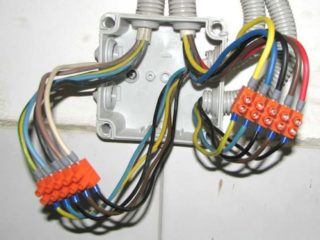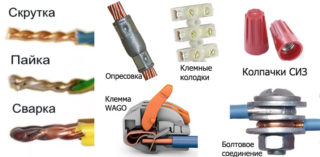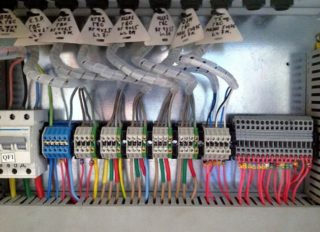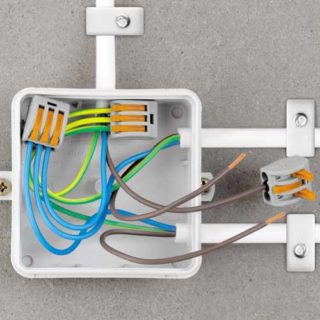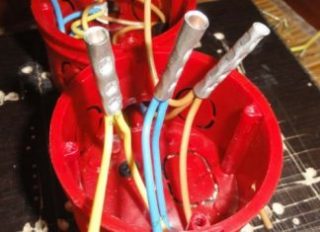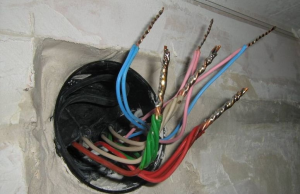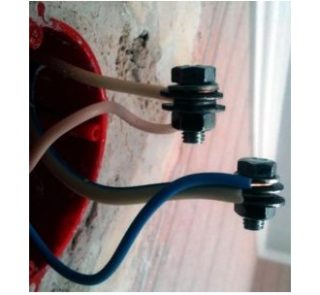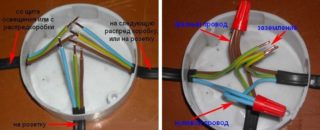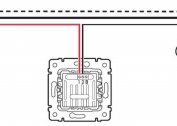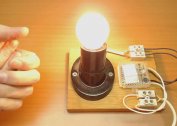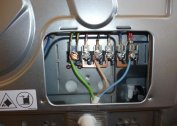The connection of the wires in the junction box requires the master to comply with all conditions. In the event of an incorrect connection, not only household devices, but also the safety of the home are at risk. There are rules and regulations that must be followed when connecting conductors in a junction box.
What is the junction box for?
Wires and cables extending from the wiring must be distributed in different rooms in the apartment. Each room can have several food outlets. To connect all the conductors, a special device called a junction box (also called a junction box or branch box) is used. All conductors from consuming devices are laid in them in accordance with the strict rules of the PUE.
Junction boxes are divided into internal and external. The internal ones are mounted in a special niche in the wall, only the box lid remains on the same level with the finish. External distribution boxes are mounted on the wall.
There are round and rectangular boxes. The number of conclusions is 4, but additional ones can be made. There is a thread on each terminal for mounting.
The benefits of a junction box include:
- Improving the maintainability of the system. Unattended contact poses a potential threat.
- Systematization of switching.
- Ease of routine inspection.
- Improving fire safety. Especially true in wooden houses, where the slightest spark can cause a fire.
- Savings when laying cables.
According to certain rules, the conductors are connected in a box.
Conductor Connection Methods
There are several types of making contact conductors in a junction box. The choice depends on the material of the cores, environmental conditions, the number of wires, the cross-section of the connected cables.
The most common connection methods:
- terminal blocks;
- wago spring terminals;
- self-insulating clamps;
- twist;
- crimping;
- soldering;
- nut clamp;
- bolted connection.
According to the requirements of the PUE, you can not just twist the wires. It is unsafe for housing.
Terminal blocks
Terminals mean plastic products with an internal brass sleeve with screws on both sides. Conductors are inserted into these places and tightly fixed. The method is very common when connecting wires in a junction box.
Benefits:
- different diameters of inlets;
- low cost;
- reliability;
- simplicity and ease of installation;
- the possibility of combining copper and aluminum.
Disadvantages:
- low quality of the product itself;
- only two wires can be assembled;
- risk of rupture of thin veins.
For more reliable fixation of stranded wires, other methods are used.
Wago Terminals
Wago pads are a spring mechanism. They are the most popular contact making devices. Compared to standard terminal blocks, docking is done using a lever. It allows you to maintain the integrity of the conductor and not damage it. Before use, the conductor is stripped of insulation. Then the cores are inserted into the hole.
Pros:
- the ability to connect dissimilar materials - for example, aluminum and copper wires;
- docking of several cores at once;
- thin veins are not damaged;
- small sizes;
- easy to do installation;
- reliability of fastening;
- the ability to install an indicator to monitor the status of the electrical network.
The disadvantages of Wago products include only high cost.
Self Insulating Clips (PPE)
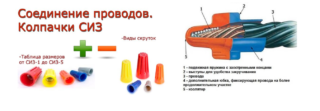 These devices are a plastic cap with a spring for fixing the cable.
These devices are a plastic cap with a spring for fixing the cable.
Main advantages:
- low price;
- nonflammable plastic;
- ease of installation;
- wide selection of color shades.
Among the disadvantages can be identified poor fastening properties and the impossibility of joining dissimilar materials.
Crimping with sleeves
With the help of sleeves you can create high-quality and reliable contact. The essence of the method is to install a wire protected from insulation in a special tube - a sleeve. After the tube is crimped by compression and treated with insulating material. Shrink tube or electrical tape is superimposed on top.
Pros:
- high quality and reliability of assembly;
- low cost.
The disadvantages of crimping:
- disposable mount;
- the need to purchase special expensive tools;
- a special sleeve is required for crimping copper and aluminum.
Crimping is highly labor intensive and requires certain skills from the master.
Soldering
Among all the proposed soldering - the most reliable way to dock. Before connecting, the conductors are stripped, after which the exposed core is treated with solder. Wires are dipped in the bath and after cooling are treated with insulation.
The main advantage of the method is high reliability and quality.
Minuses:
- A professional tool is required, with which the master must be able to work.
- High labor costs.
- The connection is disposable. It cannot be soldered.
Instead of soldering, welding may be used. The principle of operation is similar, but there is an important difference - different skills during the work. The specialist must be able to handle the welding machine.
Twisting
Wire twisting is prohibited by the rules of the PUE. The conductors can only be twisted if another fixing method is used.
Nut clamp
This type of clamps is a device with two metal plates and four bolts located at the corners. A stripped conductor is fixed in the plate and covered with a carbolite shell.
Benefits:
- low cost;
- ease of installation;
- compound of various metals;
- high-quality insulation.
The disadvantages of "Nut" include the weakening of contact with time and the need to pull it up. The clamp is also large in size, which makes it inconvenient to mount it in a junction box.
Bolted connection
One of the easiest and most affordable ways to connect wires is through bolt contact. Only a bolt, washers and nut are required for operation. The connection is quite simple - a nut is put on the thread of the bolt and the core is wound. Then one more nut is put and the second core is superimposed. Everything on top is pressed against the third washer and ends with a nut. The top is covered with insulation.
The bolted connection has the following advantages:
- cost;
- ease of installation;
- can connect copper and aluminum.
Disadvantages:
- low quality of fixation;
- the need for a lot of insulation.
Also, the bolt is quite large, it is difficult to put it in a junction box.
Docking lived with different sections
Cable products are available in different sections. The larger the conductor area, the greater the load it can withstand. To contact two wires with different cross-sections, wago terminal blocks are used.If the conductors are made of different materials, then a special block is required, inside which a special composition is applied that protects the contact from oxidation. Also, veins of different sizes can be fixed by soldering.
Land and water works
The need to install wires in underground or underwater conditions is quite rare. In these cases, you must adhere to certain conditions, so that the contact is strong and reliable.
The laying of wires in water can be carried out using a special electrical installation - a submersible pump. Then the ends of the conductors are sealed and processed by insulation. From above it is necessary to put on a thermoshrinkable tube. If you comply with the recommendations and operating conditions, the contact will be of high quality and reliable and will last more than one year.
If the wire is laid in the ground, the same protection method is used. But if you want to make an even safer connection, you can press the ends of the cable into the terminal block.
The junction box for wires must be tight. Additionally, it is filled with silicone. To protect against rodents, wires can be laid in a sturdy tube or cable.
Key schemes
In addition to connecting the wires in the distribution box, you will need to branch them into sockets and switches. You can disable the wires in different ways depending on the type of device and type of wiring.
Connecting an outlet group
The outlet group is usually allocated in a separate independent line.
The box has three wires with different colors. Each has its own purpose. Brown is the phase conductor, blue is zero, and yellow-green is grounding. Other colors may be used less often.
Before laying the wires, they should be cut to the same length and make a margin of 10-12 cm.
It is preliminary recommended to check the purpose of the cores using a tester.
Connecting a one-touch switch
If a switch is connected, the number of groups will also be three. The connection method will be slightly different. There are three inputs - from the box or electrical panel, from the lamp and from the switch. The phase must be connected to the switch button. From the output of the switch, the conductor is led to the lighting device. The light will only work in the case of closed contacts on the switch.
Connecting a two-button switch
Often used two-key types of switches. They are able to provide two groups of fixtures. The scheme of their connection is somewhat more complicated. A three-core cable is connected to the switch. One of its conductors is a common contact of the switch, the rest are sent to the outputs from the buttons. The phase is combined with a common contact. Zeros should be connected to both groups of lighting fixtures. The phases from the luminaires and the conductors from the switch are combined in pairs. One pair - from the switch to the phase of the first lamp, the second - from the switch to the second lamp.
